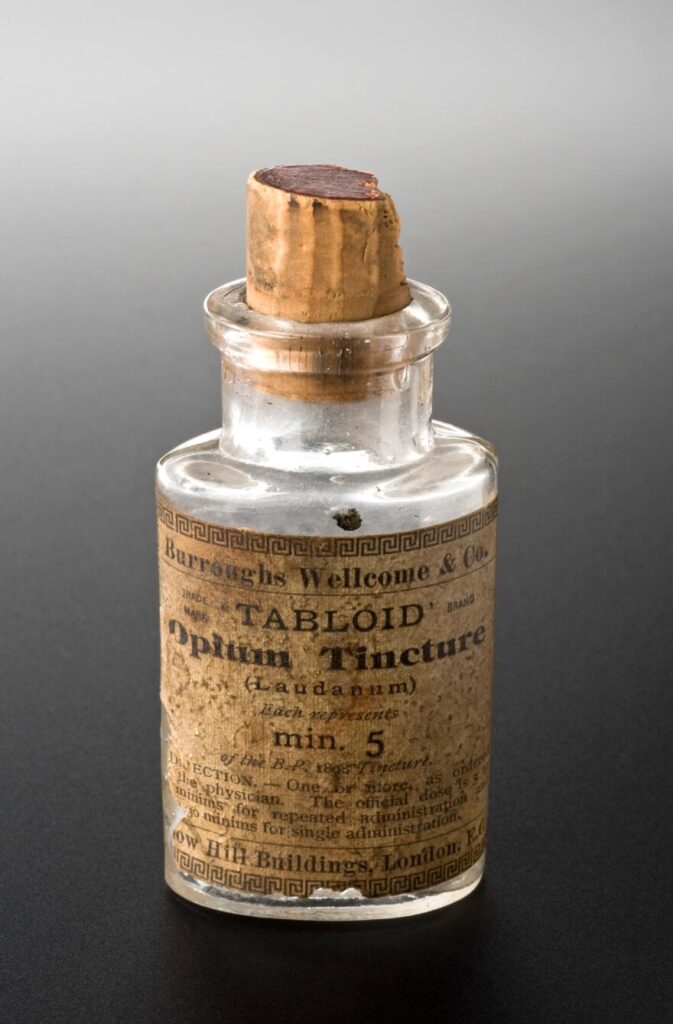Derived from the seeds of the poppy plant, opiates can take many forms. They are still used today for pain relief, and can be found in forms like morphine and codeine. In high concentrations, the substance becomes drugs like heroin, and, most obviously, opium. Though the widespread opium consumption during the nineteenth century has often been glamorized, the drug had devastating effects on almost everyone who came into contact with it, as its highly addictive nature did not become fully understood until the early twentieth century. Until then, opium could be purchased as a medicine in a variety of forms, and the most common of these was the patent medicine known as laudanum.
Medicinal Benefits
Opiates are still used in modern medicine because they do in fact provide a number of benefits. They are highly effective painkillers which are usually prescribed to treat severe pain following injury or surgery. It is also useful in suppressing the cough reflex and controlling diarrhea where other remedies have proved ineffective. It can also be used as a sedative, as it slows the heart rate and breathing. It is this latter effect that makes opium overdoses so dangerous, as this suppression of the respiratory system ultimately leads to coma and death.
Easy Access
Laudanum was easily available for people of all classes. 25 drops only cost a penny, and could be purchased by anyone, even children as young as 8 years old. The medicine was stocked at druggists, apothecaries and even pubs. Considering the frequency with which epidemics of cholera and dysentery cropped up during the 1800s, laudanum’s effectiveness against diarrhea helped to boost its popularity. Alongside its medicinal effects, laudanum was often favoured for its euphoric effects, and was actually cheaper than alcohols like gin, as it wasn’t taxed at the same rate. Given it’s ready supply, its plethora of uses, and its minimal cost, it is little wonder that it became the medicine of choice in treating almost any ailment imaginable.

Infant Doping
Laudanum was often used to treat childhood ailments like colic and diarrhea. It was also used as a sedative to keep babies quiet – this was particularly common among poor working mothers, who often needed to keep their infants with them as they worked. Accidental overdoses were not uncommon, and murders did occasionally occur using laudanum as the method of dispatch. However, few parents faced trial for these murders, as opium did not show up during autopsies and deaths were easily explained away in an era where childhood mortality rates were high. There were probably many more cases of infanticide by laudanum than were actually recorded; it was an easy way to get rid of an unwanted burden in a time where support for mothers and poor families was non-existant.
Recognising the Dangers
Medicines containing opium were banned from general sale in the UK under the 1920 Dangerous Drugs Act. By then, aspirin had become available, which was a much safer alternative as a painkiller. Though laudanum is technically still available in both the UK and the US, it is rarely prescribed except as a last resort, as it is still recognised as a highly addictive and dangerous substance.
Sources and Further Reading